Matt Larson – Virtually Unemployed 2.0
$1,997.00 Original price was: $1,997.00.$199.00Current price is: $199.00.
Matt Larson Virtually Unemployed 2.0 Course [Instant Download]

What is Matt Larson Virtually Unemployed 2.0?
Virtually Unemployed 2.0 is a comprehensive real estate course created by Matt Larson that teaches investors how to build an automated business using virtual assistants for daily operations.
The course provides complete systems for establishing a remote business infrastructure, generating motivated seller leads through multiple marketing channels, analyzing investment opportunities, and closing profitable deals without requiring your physical presence.
Through 91+ detailed video lessons, students learn practical methods for property acquisition, seller attraction, cash buyer development, and business scaling through strategic automation.
The program transforms traditional real estate investing from a time intensive activity into a systematized business that continues generating income even when you are not actively working.
📚 PROOF OF COURSE
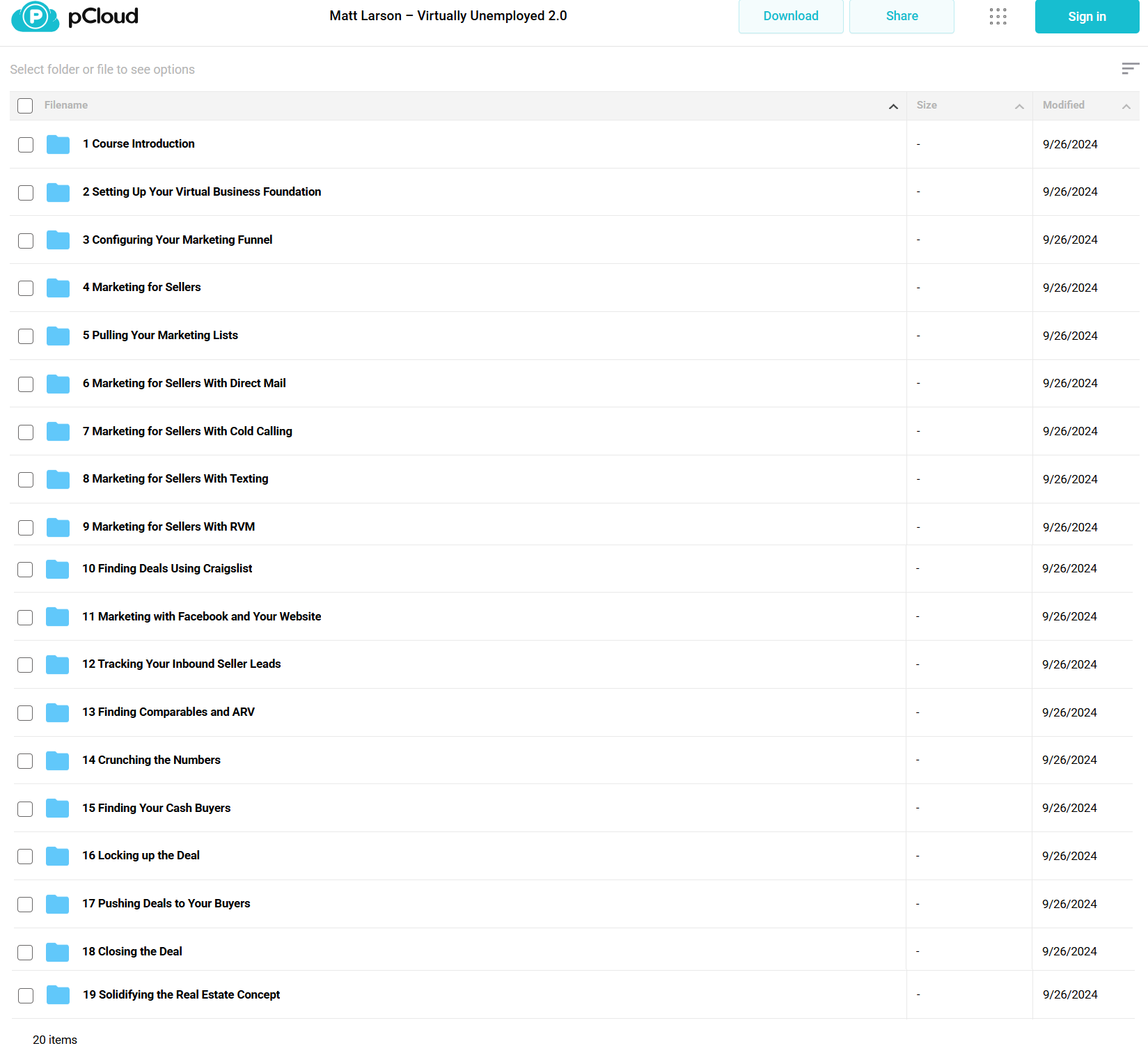
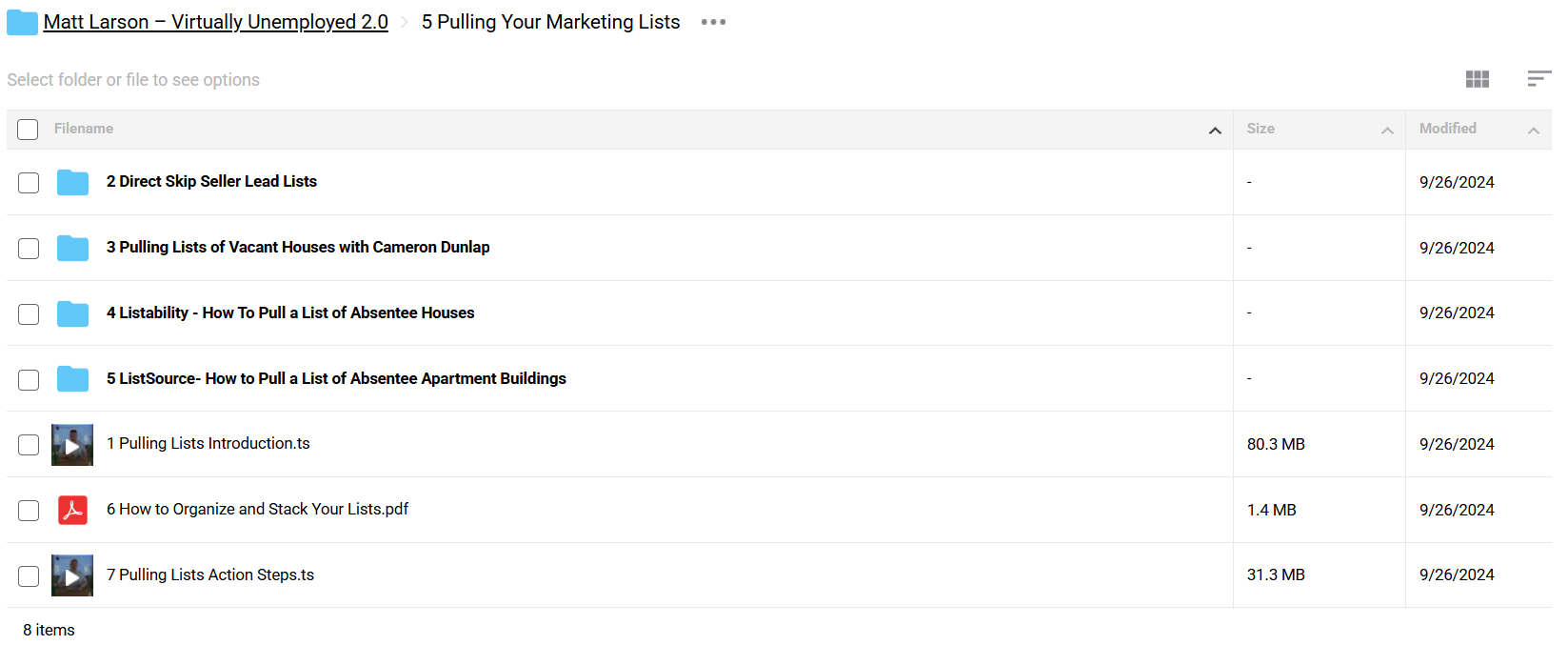

What you’ll learn in Virtually Unemployed 2.0:
Virtually Unemployed 2.0 provides a complete system for building a remote real estate business using virtual assistants. Here’s what you’ll learn:
- Virtual Business Foundation: Hire and manage VAs through Upwork and Fiverr to handle daily tasks
- Marketing Automation: Set up direct mail, cold calling, texting, and RVM systems to get seller leads
- Lead Generation: Create marketing funnels to attract motivated sellers through multiple channels
- Deal Analysis: Calculate ARV, renovation costs, and profit margins to make smart investment decisions
- Buyer Acquisition: Find and build relationships with cash buyers using proven methods
- Deal Closing: Handle contracts, negotiations, and closing processes virtually with step-by-step guidance
This program turns real estate investing from a time-consuming job into an automated business that runs even when you’re not working.
Virtually Unemployed 2.0 Course Curriculum:
✅ Module 1: Course Introduction
This introductory module welcomes students to Virtually Unemployed 2.0 and establishes the foundation of the virtual real estate business model. It includes the Virtually Unemployed E-Book which likely outlines the core philosophy and approach to creating a hands-off real estate investment business.
✅ Module 2: Setting Up Your Virtual Business Foundation
This extensive module covers all aspects of building a remote team infrastructure, with particular focus on finding, hiring, and managing virtual assistants through platforms like Fiverr and Upwork. Students learn various payment methods for their VAs including Transferwise, Payoneer, and PayPal, as well as how to set up VAs with U.S. phone numbers and connect them to U.S.-based computers. The module also covers implementing accountability systems through weekly reporting structures.
✅ Module 3: Configuring Your Marketing Funnel
This module focuses on establishing effective marketing systems with emphasis on call handling and lead capture. Students learn to set up CallRail for tracking incoming leads, configuring a proper call center, and alternative approaches for handling calls without an answering service.
✅ Module 4: Marketing for Sellers
This focused module presents core strategies for marketing to property sellers, likely covering how to position offerings and craft messaging that appeals to motivated sellers in different situations.
✅ Module 5: Pulling Your Marketing Lists
This module teaches students how to identify and compile targeted lists of potential property sellers. It covers various list sources including Direct Skip for distressed and recession-affected sellers, Cameron Dunlap’s resources for vacant houses, and Listability for absentee homeowners. Students also learn how to organize and “stack” lists to maximize efficiency.
✅ Module 6: Marketing for Sellers With Direct Mail
This module focuses on direct mail campaigns for reaching property sellers. It includes detailed instructions on running effective mail campaigns and the valuable opportunity presented by returned mail cards, which often indicate vacant or transitional properties.
✅ Module 7: Marketing for Sellers With Cold Calling
This section teaches students how to implement cold calling campaigns through virtual assistants. It covers the process of skip tracing with DirectSkip to find phone numbers, setting up the complete cold calling system with Calltools, and managing the overall cold calling workflow.
✅ Module 8: Marketing for Sellers With Texting
This module explores text messaging as a marketing channel for reaching sellers. It covers multiple texting platforms including Batchleads and Smarter Contact, along with Twilio setup for messaging infrastructure. Students receive templates for effective seller lead texting.
✅ Module 9: Marketing for Sellers With RVM
This focused module covers Ringless Voicemail (RVM) technology for reaching potential sellers, allowing students to deliver voicemail messages directly to prospects’ phones without them ringing—creating another touchpoint in the marketing mix.
✅ Module 10: Finding Deals Using Online Platforms
This module expands beyond traditional marketing to explore finding deals through online platforms like Craigslist, Facebook Marketplace, and Zillow. It includes making offers through these platforms and a bonus section on finding apartment building sellers.
✅ Module 11: Marketing with Facebook and Your Website
This module covers digital marketing strategies including Facebook advertising and website lead generation. Students learn to target their curated lists with ads, implement effective lead generation ads, and optimize their websites to capture seller leads.
✅ Module 12: Tracking Your Inbound Seller Leads
This module establishes systems for managing incoming seller leads. It covers taking inbound calls with proper scripts, completing standardized seller lead sheets to capture crucial information, and using Google Forms as a digital lead management system.
✅ Module 13: Finding Comparables and ARV
This technical module teaches students how to accurately analyze property values through comparable sales. It covers determining After Repair Value (ARV) using various tools including Batchleads and Zillow for both retail and wholesale comps.
✅ Module 14: Crunching the Numbers
This critical module focuses on deal analysis and offer formulation. It covers developing comparable reports for ARV, applying formulas for both fix-and-flip and wholesale offers, and estimating renovation costs accurately.
✅ Module 15: Finding Your Cash Buyers
This extensive module covers multiple strategies for building a cash buyer database. Techniques include using “ghost ads,” Direct Skip for buyer leads, identifying hedge fund buyers through Propstream, and finding individual investors through online searches, Fiverr, Hunter.io, and MLS cash sale records.
✅ Module 16: Locking up the Deal
This module covers the process of securing properties under contract. Students learn to obtain property photos from owners, use lockboxes for vacant properties, conduct property walkthroughs, and renegotiate based on inspection findings. It also covers building an acquisition team, finding attorneys and title companies, and managing earnest money.
✅ Module 17: Pushing Deals to Your Buyers
This module appears to duplicate much of the content from Module 16, likely focusing on the buyer-facing aspects of transaction management. It includes similar topics on securing properties, managing the acquisition process, and preparing for the transaction.
✅ Module 18: Closing the Deal
This module focuses on successfully completing transactions. It covers transaction coordination, closing with assignments or double-closes, conducting property showings with buyers, and using proper notification templates to keep all parties informed.
✅ Module 19: Solidifying the Real Estate Concept
This concluding module helps students integrate all the course components into a cohesive business system. It includes a wholesaling flowchart that visually represents the entire process, reinforcing the interconnected nature of the various strategies and systems covered throughout the program.
Who is Matt Larson?
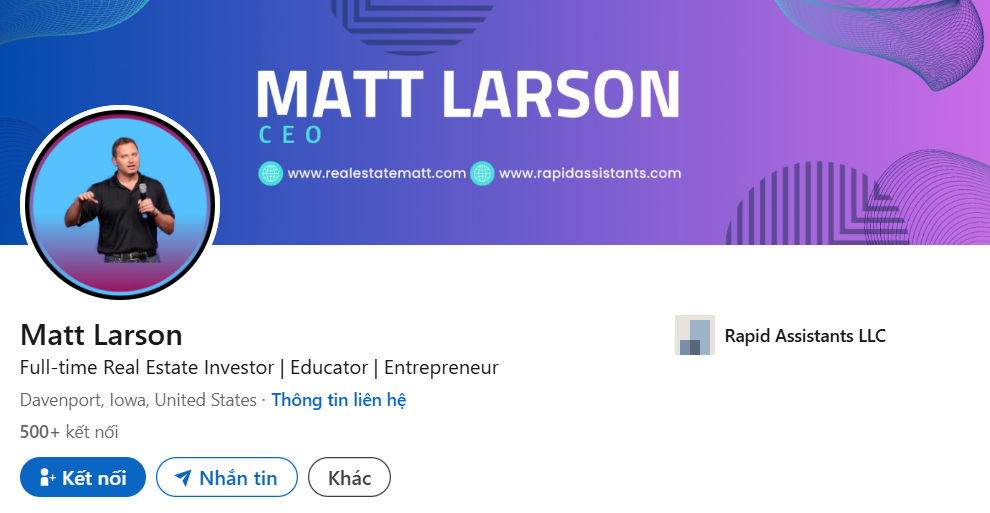
Matt Larson is a real estate investor and educator with 18+ years of experience. He started as a machine shop worker before moving into real estate, completing over 4,000 deals and buying $85 million in property in the last 3 years.
Based in Davenport, Iowa, Matt’s company buys and sells 20-30 houses monthly and has done so for over a decade. His practical approach has earned recognition from industry leaders like Tony Robbins.
Known as the “trainer of champions,” Matt has mentored many successful students who became real estate educators themselves. His teaching focuses on practical strategies anyone can use.
In 2016, Matt started his education company to help regular people use virtual assistants and automation in real estate. Virtually Unemployed 2.0 includes expertise from his team members Amanda Milne and Tyler Smith, who specialize in acquisitions, automation systems, and renovations.
Be the first to review “Matt Larson – Virtually Unemployed 2.0” Cancel reply
Related products
Real Estate
Real Estate Finance
Real Estate
Real Estate Finance
Real Estate Finance

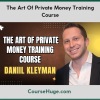

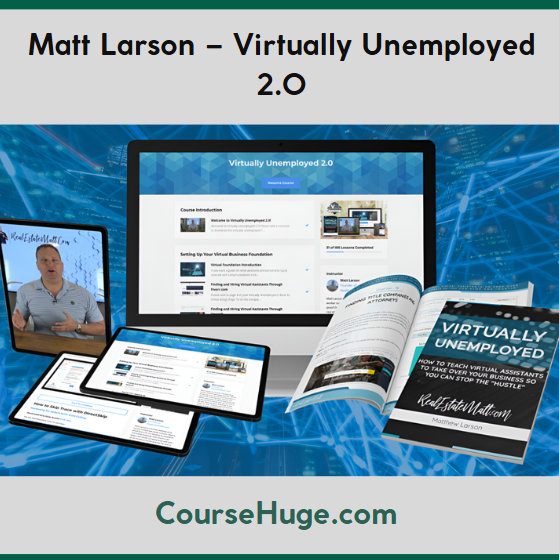
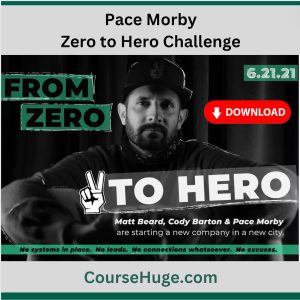
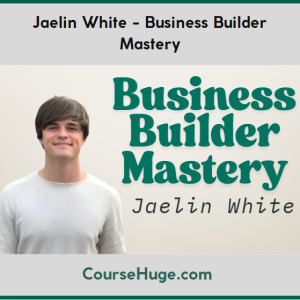
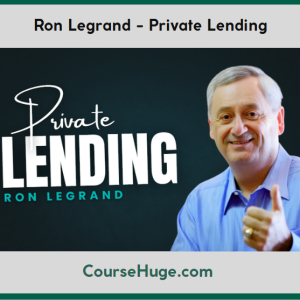
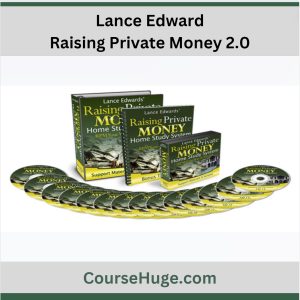
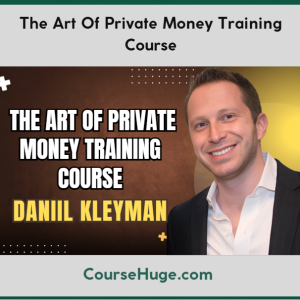
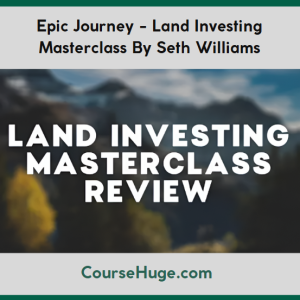
Reviews
There are no reviews yet.